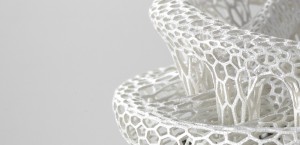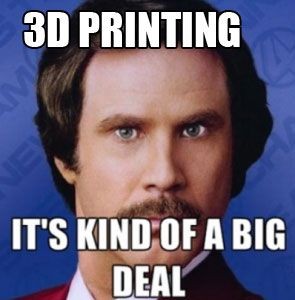Here’s a post on #FirstThoughts, #3DPrinting and #LifeExcitement. Blog post #1 on making things and the super fun stuff that’s related.
Stepping into the MakerLab, it’s like a kid arriving in a candy shop. I’m an engineering student who’s just been given the tools to make ideas a reality. There’s a blank canvas and so many possibilities. The chance to follow any train of thought, develop them into ideas, and have the resources and time to create them is quite a luxury.

On the subject of candy shops and 3D printing, 3D printed candy is a thing too!
Surrounded by a room of Ultimakers buzzing away, the excitement is unreal. Yet, 3D printing is old tech. The concept is, anyway. The impression I get is that the forward development of this technology is in creating higher resolution prints, printing in materials other than common PLA and ABS (their mechanical properties are not suited for the more intensive practical applications), increasing print speed, and even combining different materials as they are being printed. From the class skype call with John Hornick, book author of “3D Printing Will Rock the World“, he mentioned possibilities of printing in materials with dual/multiple functionality. While 3D printing is paving the way and bringing us closer to a single machine that could create entire multi-material devices like, for example, a smartphone, this technology is still a very long way off. Multifunctional materials were mentioned as a feeder material into 3D printing machines, but having spent my last semester studying research papers on multifunctional materials, am fairly certain that it’s still rather far off. On the other hand, maybe I’ve underestimated quite how far we’ve come in the realm of 3D printing? I guess I’ll just have to read John’s book for a fuller picture.
Where does this leave us with 3D printing then? There’s definitely much scope for research and development from the materials perspective. As a current tool in “making” or creating things, it’s a good prototype, and good for small parts that do not have to withstand aggressive or cyclic structural loading. Complex (and beautiful) shapes are possible, but I wouldn’t say we’re 3D printing items that I’d be happy to seamlessly integrate into my everyday life yet.

3D printed from glass powder, there’s some very artistic designs you can create.
So what are my own goals with regards to 3D printing? Getting involved in the printer material research that will bring about these futuristic ambitions, or/and using that current technology to make small projects and ideas possible.
The real beauty of what we have so far (in terms of 3D printing) is that there are so many possible items and devices to make, which are completely within reach of the average you and me. Looking to the future, we’ll be 3D printing biological structures and mechanical devices on demand. For now though, I’m happy to settle with any shape I want, at the push of a button, right here right now.
One of UIUC Makerlab’s Ultimakers in action.


